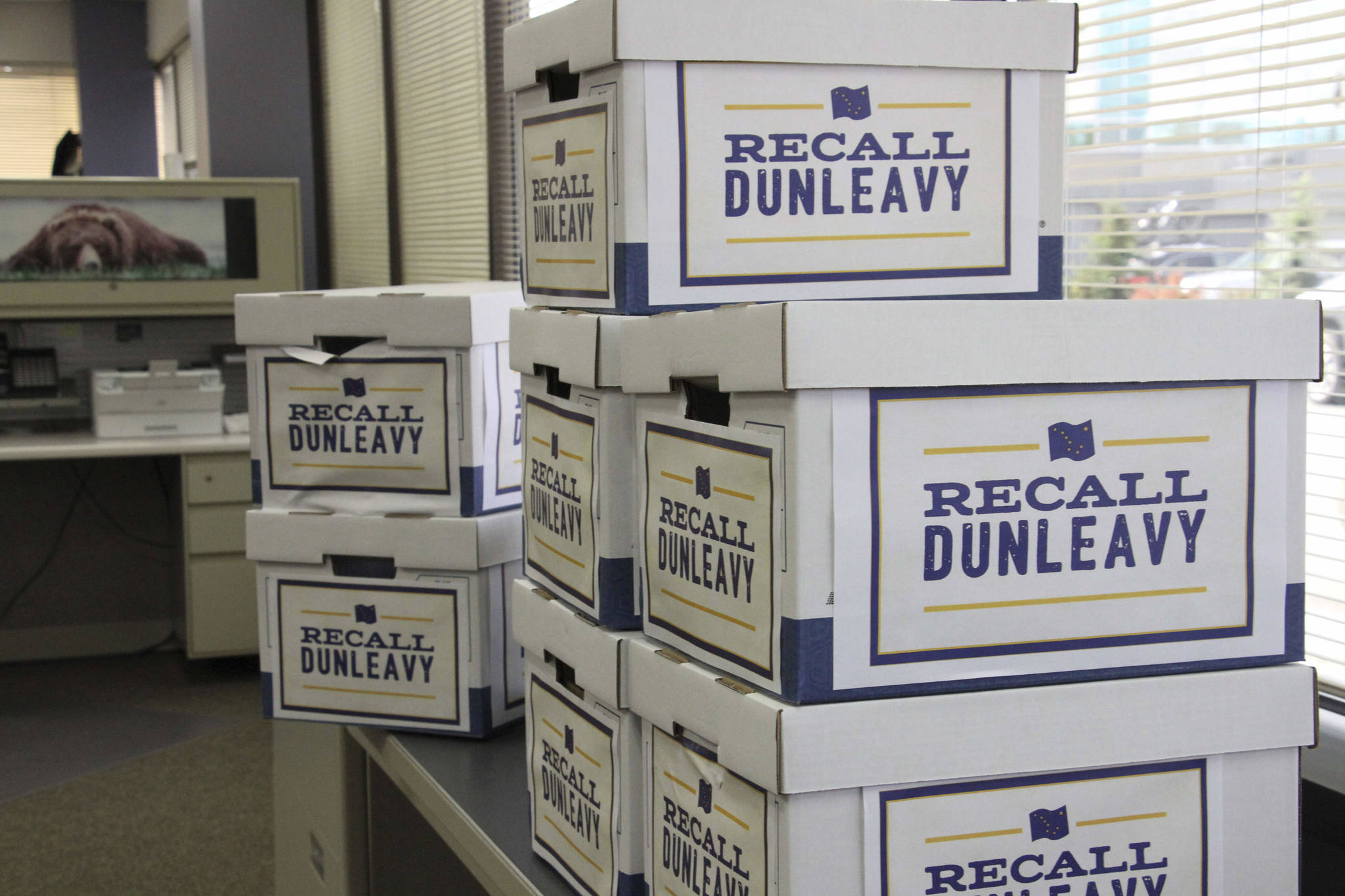Supporters of an effort to recall Alaska Gov. Mike Dunleavy submitted signatures to a state elections office Thursday, an early step in their push.
The Recall Dunleavy group said it collected 49,006 signatures since launching Aug. 1, more than the 28,501 needed as part of the initial phase of the recall effort. The group has said it gathered additional signatures, in part, to compensate for any that might be disqualified.
Supporters gathered in Anchorage in the parking lot of Cook Inlet Region, Inc., an Alaska Native corporation whose board of directors has endorsed the recall effort, before marching to a nearby elections office to drop off boxes of signatures. Afterward, they sang the Alaska state song.
Vic Fischer, the last surviving delegate to the Alaska Constitutional Convention, called the effort a “phenomenal outpouring of citizenship,” with Alaskans coming together “to get rid of this dark cloud that has descended over Alaska.”
A message seeking comment was sent to a Dunleavy spokesman.
Public anger over Dunleavy budget vetoes helped fuel the recall effort, which accuses Dunleavy of separation of powers violations and violating state law by not appointing a judge within a statutory timeframe, among other things. Grounds for recall under state law are lack of fitness, incompetence, neglect of duties or corruption.
The Division of Elections said it will begin the signature verification process and request from the Department of Law an opinion on whether the grounds for recall listed in the application meet legal requirements. Director Gail Fenumiai said the goal is to complete that process in 60 days.
The division said the law does not set a deadline for reviewing the application but that it historically has treated recall applications as it would initiative applications and completed reviews in the same time frame.
Attorneys for the recall campaign, in a letter to Fenumiai, said they considered 30 days ample time for the review to be completed.
If the application is certified, it would trigger another signature-gathering phase, with supporters needing 71,252 signatures in a bid to put the issue to voters. Individuals who signed during the first round of signature-gathering would be allowed to sign again, said Cori Mills, a Department of Law spokeswoman.
Regarding the review process, Mills pointed to a 2013 department analysis of an effort to recall a state legislator, which in addition to ensuring proper signatures and other technical requirements had been met considered whether the claims were sufficiently stated.
Aaron Welterlen, a recall organizer from Fairbanks, said he expected the issue to go to court if the application is denied. He brushed off suggestions of any concerns about gathering a higher threshold of signatures if the application is approved and the process advances.
“Winter? Hey we’re Alaskans. It’ll be cold and dark. We’ll just find new ways to do it indoors,” he said.
According to the National Conference of State Legislatures, there have been many attempts to recall governors, but few have gone far enough to trigger recall elections. Then-Wisconsin Gov. Scott Walker survived a recall election in 2012.
In 1992, there was an effort in Alaska to recall then-Gov. Wally Hickel and Lt. Gov Jack Coghill. According to the Division of Elections, the application was certified and the matter went to court, but the recall attempt was not completed.

